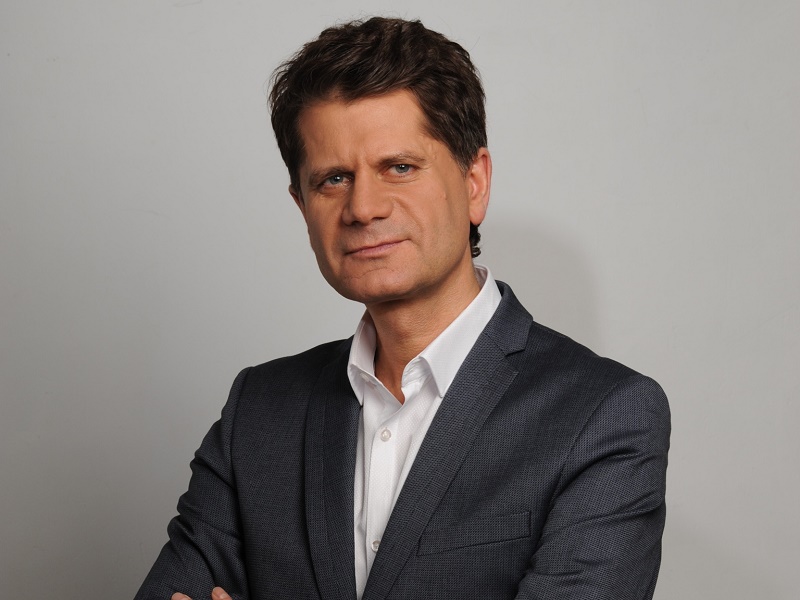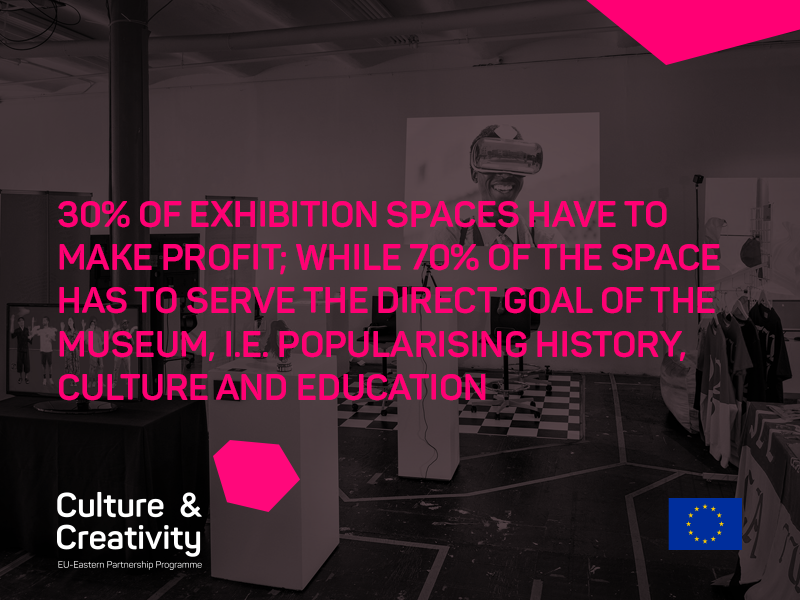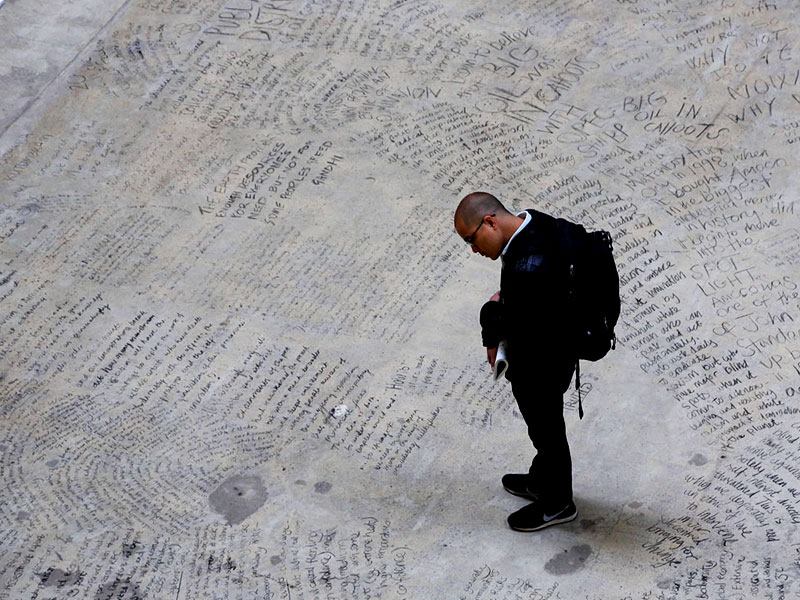
OLEG RYZHKOV: “MUSEUMS LACK DIALOGUE WITH VISITORS”
How can a museum survive in conditions of insufficient state support?
In fact, it is very difficult to survive, and only the strongest manage to keep afloat. This applies to each cultural sector in particular, and life in general. That is why one of the policy tools of our museum is to invite commercial projects which will undoubtedly be successful. But not only to make money. Thanks to these projects, we get more opportunities to implement “social projects”. In my view, 30% of exhibition spaces have to make profit; while 70% of the space has to serve the direct goal of the museum, i.e. popularising history, culture and education. When these ratios are respected, everything goes well. We cannot rely exclusively on the state budget.
Culture has a huge impact on the economic development of a region or a territory. And you don’t have to look far for examples. When the castle in Nesvizh opened after restoration, the town became a cultural hub and people began talking about it. The need to develop public catering establishments, souvenir production and hotel business arose. This all led to the creation of new jobs. One cultural site created a cultural megalopolis and gave impetus to the development of the economy.
Is there a new perception of museum space? Can you describe it?
Museum space and the visitor have to play actor and viewer, to pique each other’s interest. Therefore, to create museum exhibition projects theatre artists and directors are quite often invited. The museum’s visitors are the viewers. And if those who create new exhibitions can attain fine contact between the protagonist and the viewer, the exhibition will be a success.
Museums in Minsk are very disunited, each tries to “hog things for itself”. That’s a big mistake. I think that there should be a single museum space where the visitor would feel comfortable. Especially on weekends: you come, learn about an art exhibition, historical projects, contemporary art. Such drive in the museum sector could change people’s minds, destroy the stereotype that a visit to the museum is very strange.

On the contrary, it is a very delicate and complex job that includes psychology and dramatic composition. People go to the same museum hall, and with each new project see it in an absolutely different light. For now, there’s a view that to “make an exhibition” is to bring objects and arrange them around. We have oversimplified everything. Culture is not simple or easy.
Yes, contemporary art is in vogue now. People come, look around… But only a very small percentage understands. Others come because it’s trendy and it ends here. They go to be able to say that they’ve seen the exhibition.
The museum should not be a one-time visit kind of place. Exhibitions, museum projects should work in way that a person would want to go further, learn more independently, to plunge and explore the theme by oneself, and in the process turn to the museum for information. Now we have viewers but not the desire to explore.
Actually the word “exhibition” is gradually disappearing from my vocabulary. I would be offended if someone were to tell me, “We’ve come to your museum for an exhibition”. We have to strive to create projects that are complex and deep.
I am pleased when people come to the museum and spend at least two hours here.
Here’s an example: when we first brought to the museum the works of Picasso and Dali… I don’t want to offend anyone, but 60-70% of people came to be able to put a tick that they’ve been there, to “check in” in social networks and tell friends that they’ve “been to Picasso and Dali”. Just for the image and not inner desire. Ask what the person learned from the exhibition. You shouldn’t go to the museum for the sake of your image, you have to go to educate yourself.
What new professions should appear in museums?
We strive to replace guides in the museum with specialists focusing on a dialogue with the group, museum educators. Highly specialised employees interacting with visitors are no longer needed. We do our work with the audience only through the dialogue, and in no way in a one-way academic monologue. Abstract stories with a pointer in hand are a thing of the distant past.
Any museum is the image of the country. That is why people who work here have to be educated, speak foreign languages, know world culture and psychology. Those who are engaged in arranging exhibitions should have refined tastes and be proficient in new technologies.
We are moving away from the traditional notion of “room guards”. Consultants now work in our museum rooms. Thus, we try to explain to visitors what they are looking at. After all, what matters, what museums lack today is the two-way dialogue between those who arrange museum exhibitions and the viewers.

Unfortunately, even now museum professionals hold such beliefs: what matters is preservation and for us to study the artefact ourselves. That was the reason why people lost interest in museums. For the same reason, exhibitions “stood idle” for 15-20 years, and nothing changed in museums. The most valuable artefacts were not exhibited. Of course, there are very valuable artefacts that have to be protected and stored with utmost care. But they have to be put on show for people to see them. We boast that we have 500,000 artefacts, whereas people ask: “So, where are they? Why can’t we see them?” I somehow manage to change this situation and persuade keepers to be more open to the dialogue. Our collections are actively exhibited abroad and within the country. But such a professional misfortune exists, and I think that one more generation has to pass before we overcome it.
What techniques, new technological methods do you use or plan to use to show history?
I believe that it is good to showcase history through specific events, personalities or phenomenon. For example, we are now showing the history of Belarus through the history of the development of trade on Belarusian land. Trade is a separate subject, but the history of trade and the history of the land are two sides of the same coin. In addition, we are planning a new project on the history of money in Belarus.
We are drawing up a joint project between the Museum of History of Belarus and the Belarus 3 TV channel. The idea of the TV programme is to narrate historical eras through a single museum artefact. This is a very good approach, in my opinion. The collection of our museum will provide the artefacts for the programme. I think that these TV programmes will be quite interesting. We should move away from dryness and monotony.
We have always been brought up with certain pop names, images and then seek to ape them. These things do not necessarily carry in themselves some high culture. Therefore, the main challenge today is to change the perception of culture. But the issue here is not about a single year or even a single generation.
Culture is a sphere where you have to think. For now, people come to us to “look at pictures”. Perhaps, we are partly to blame for this, I mean us, museum professionals. We are not keeping up with the pace of the modern world and are not presenting information in the format that consumers would like to receive it.
We are presenting artefacts for windows with a rotating exhibition in the main office and the branches of a large bank, one of the sponsors of the museum. When selecting works of art, we take account of the wishes of the bank, delve into museum space, which is not normal for us. After all, a museum is not just a building. People have to see what is connected with our history.
It would be great to use the outdoor territory of the museum. A person who finds it difficult to cross the threshold of the museum would perhaps be curious to peek into the courtyard, to find out what’s happening there, and then move into the museum. I would like a natural need to visit a museum to be born out of such actions, and not to order or on the instructions of a school or a trade union. What matters more for me is when a lone visitor goes through the doors of the museum. If there is a large number of such visitors, then that means that the museum is in demand.




